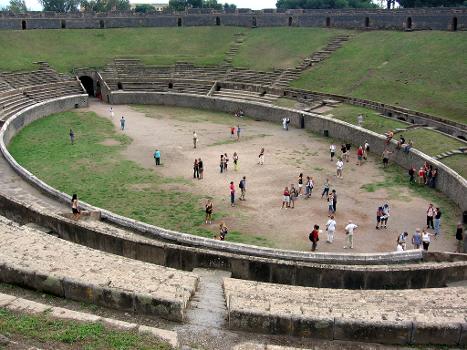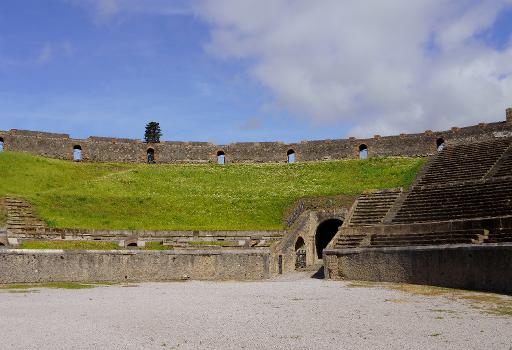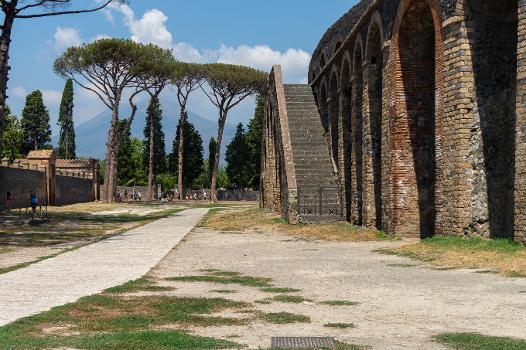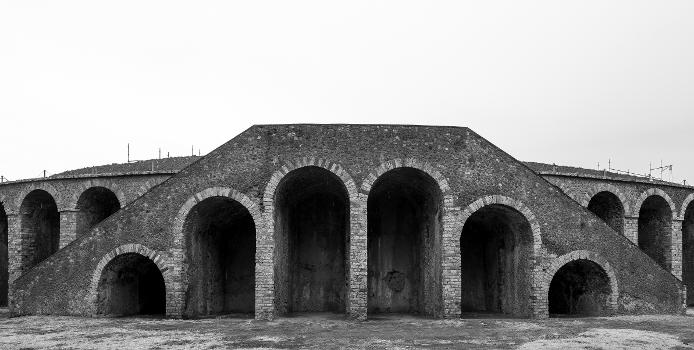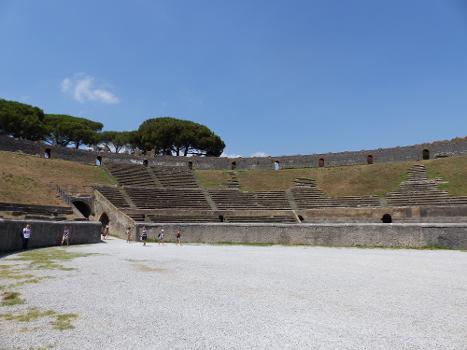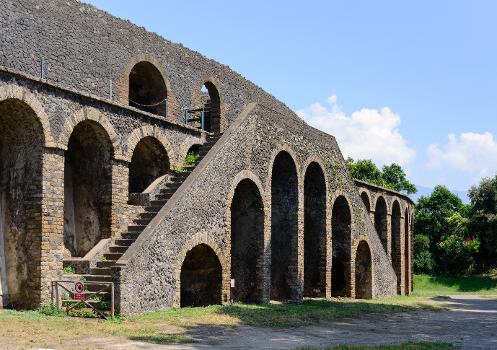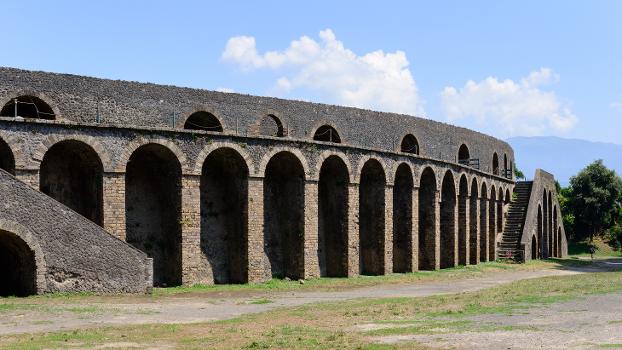General Information
| Completion: | 70 B.C. |
|---|---|
| Duration of works: | 79 years |
| Status: | destroyed |
Project Type
| Material: |
Masonry structure |
|---|---|
| Architectural style: |
Roman |
| Function / usage: |
Amphitheater |
| Plan view: |
Structurae Plus/Pro - Subscribe Now! |
Location
Technical Information
Dimensions
| width | 104 m | |
| length | 135 m | |
| arena | width | 35.1 m |
| length | 66.7 m |
Chronology
| 79 | Buried in ash along with the entire city of Pompei due to the eruption of Mount Vesuvius. |
|---|
Excerpt from Wikipedia
The Amphitheatre of Pompeii is one of the oldest surviving Roman amphitheatres. It is located in the ancient Roman city of Pompeii, and was buried by the eruption of Vesuvius in 79 AD, that also buried the city of Pompeii and the neighbouring town of Herculaneum.
Six bodies were found during the excavations.
Design and construction
Built around 70 BC, the amphitheatre is one of the earliest Roman amphitheatres built of stone; previously, they had been built out of wood.
Contemporarily, it was known as a spectacula rather than an amphitheatrum, since the latter term was not yet in use at the time. It was built with the private funds of Gaius Quinctius Valgus and Marcus Porcius (a relative of Julius Caesar's rival). The space was constructed shortly after Pompeii's induction as a Roman colony, and an inscription on the amphitheatre honoring the donors, Gaius Quinctius Valgus and Marcus Porcius, cites one of their motives, being, "to demonstrate the honour of the colony," perhaps indicating the amphitheatre's role in establishing Roman influence in Pompeii.
The design is seen by some modern crowd control specialists as near-optimal. The design of the lower entrances for higher-class citizens, who would been seated closest to the pit, have been noted for their facility in curating unique viewership experiences—viewers would be struck by both the beams of light flooding the dark tunnel and the roar of the crowd as they entered the amphitheatre, creating a highly stimulating and dramatic experience.
Its washroom, located in the neighbouring palaestra has also been cited as an inspiration for better bathroom design in modern stadiums.
The amphitheatre measures 135m long and 104m wide. The arena (pit) is measured to be 6m below ground level. and measures 66.7m long and 35.1m wide. The only internal features of the amphitheatre at Pompeii were a corridor that cut into the base of cavea. This corridor ran the circumference of the amphitheatre and is used to access the arena.
Fresco depicting the riot between the Nucerians and the Pompeians around the Amphitheatre of Pompeii, National Archaeological Museum, Naples
Gladiatorial contests
The preservation of Pompeii and its amphitheatre have given insights into the gladiatorial culture of Rome. Painted posters on the walls of the amphitheatre have been uncovered depicting gladiators accompanied by slogans and nicknames, evoking shades of the modern posters, billboards, and banners depicting today's sports stars and celebrities. For example, one poster declares a gladiator to be the "Heart throb of the girls." One of the most notable events in the amphitheatre's history occurred around 59 AD, when a deadly brawl occurred between Pompeiians and residents of Nuceria during games in the amphitheatre, resulting in a 10-year ban on such events.
Earthquake
The amphitheater was damaged by an earthquake in 62 AD. The magistrate Cuspius Pansa and his son undertook its restoration.
Text imported from Wikipedia article "Amphitheatre of Pompeii" and modified on February 14, 2023 according to the CC-BY-SA 4.0 International license.
Participants
Currently there is no information available about persons or companies having participated in this project.
Relevant Web Sites
- About this
data sheet - Structure-ID
20085238 - Published on:
11/02/2023 - Last updated on:
03/05/2024

